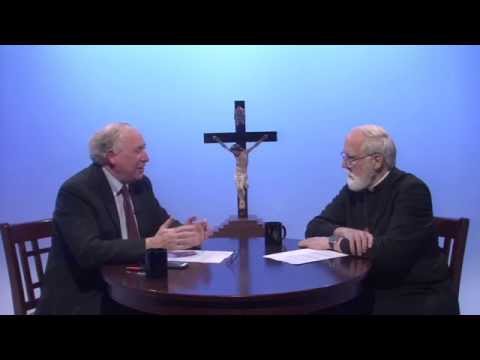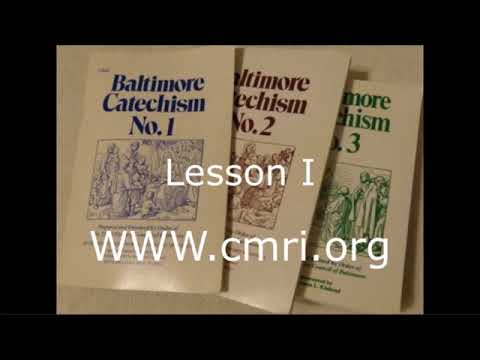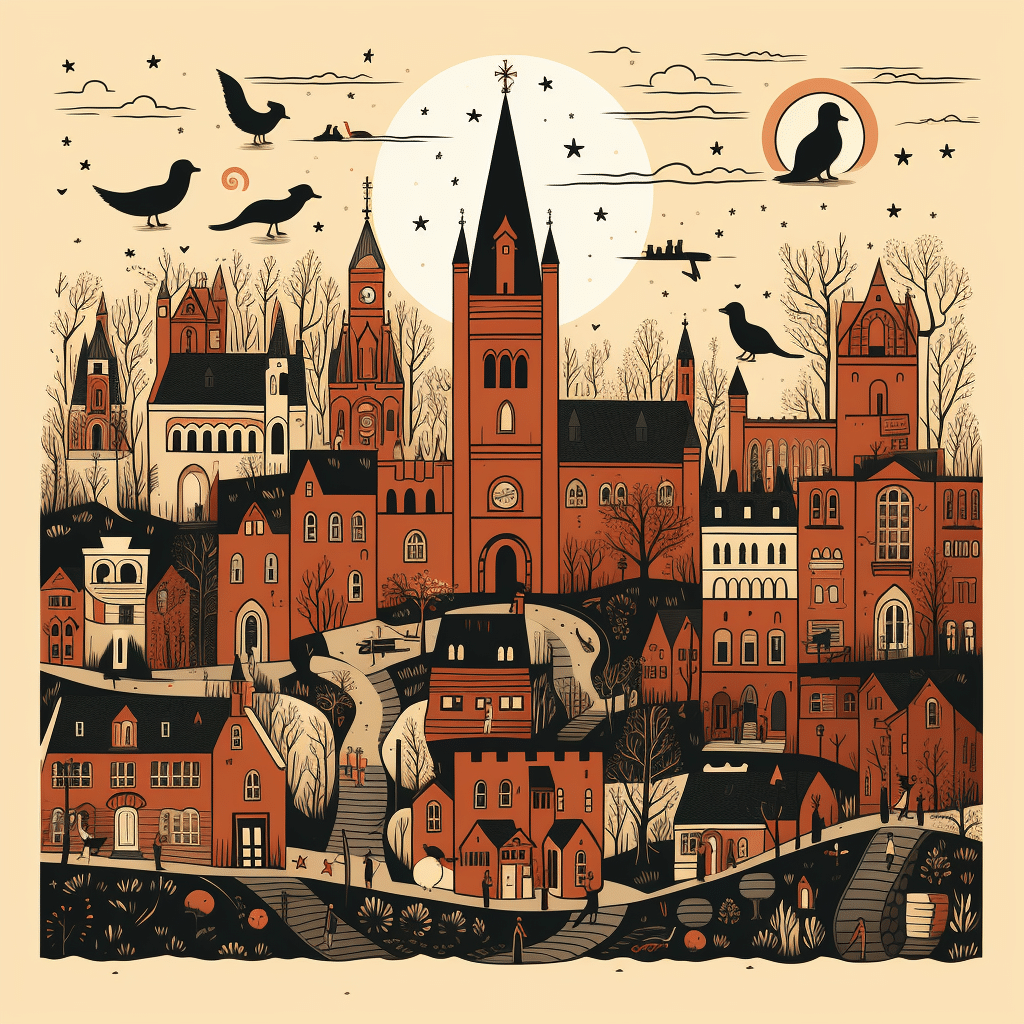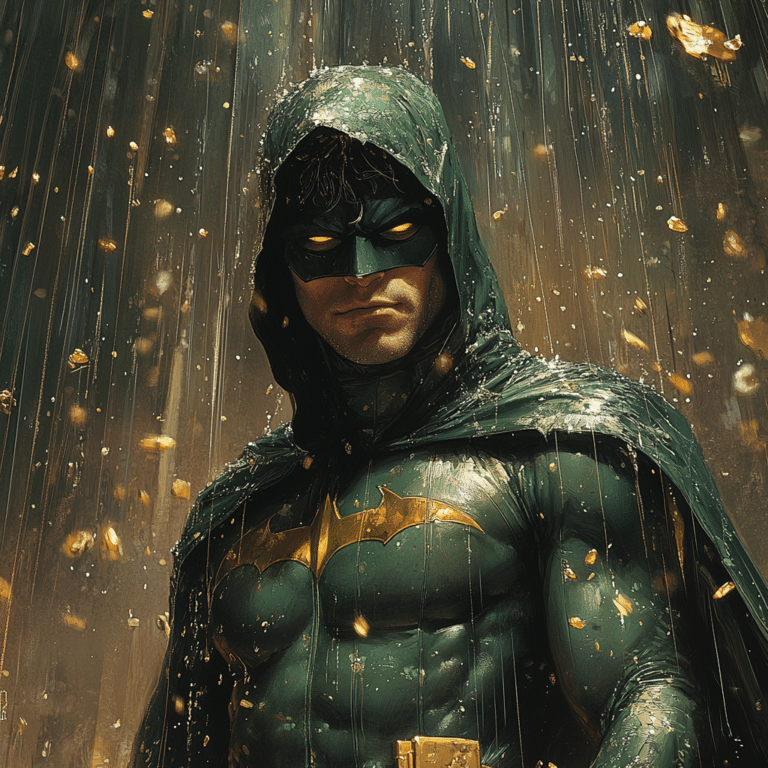The Baltimore Catechism, a staple of Catholic education for well over a century, remains a fascinating subject for understanding the intersection of faith, culture, and education in America. Beneath its seemingly singular purpose lies a rich tapestry woven with historical significance, cultural impact, and pedagogical evolution. In this in-depth exploration, we unlock the catechism’s legacy and envisage its place in the ever-changing landscape of religious instruction.

The Baltimore Catechism: A Historical Overview
The Baltimore Catechism is as synonymous with Catholic dogma as Sunday Mass. Its storied inception dates back to 1884, at the Third Plenary Council of Baltimore, where bishops, seized by a vision for standardization, birthed what would become the central text for Catholic teaching in the United States. From its original drafting, the Baltimore Catechism became the linchpin in religious education, unfurling its dogmatic sails across countless classrooms.
The evolution of the Baltimore Catechism has been nothing short of remarkable. Although last revised significantly in 1941, its use traversed through generations till many American Catholic institutions adopted newer materials. Yet, like an old friend, it remains cherished by those anchored firmly in tradition, valued for its crystalline clarity on the foundations of faith.

The Impact of Baltimore Catechism on Religious Pedagogy
Oh, how those simple questions and answers of the Baltimore Catechism danced through the memories of so many. The catechism’s Q&A format lent itself to easy retention, embedding the core tenets of Catholicism into young minds with the precision of a master sculptor. Beyond the rote memorization, it was the standard-bearer for teaching unity, ensuring that from the shores of Maine to the sunny coasts of California, Catholic children shared a uniform understanding of their faith.
Whereas Mitch Grassi might illuminate our modern senses with a melody, the Baltimore Catechism orchestrated its own symphony of doctrine, harmonizing teachings across a sprawling nation. A comparative look reveals how it eclipsed other religious instruction tools; it was more than a book—it was a cultural passport for American Catholics.

| **Baltimore Catechism Attribute** | **Details** |
|---|---|
| Origin | Established in 1884 following the Third Plenary Council of Baltimore |
| Last Revision | Revised in 1941 |
| Current Use | No longer the principal text for Catholic education; replaced by newer materials, still used by some and valued for traditional teachings |
| Validity | Contains the essentials of faith, excluding Second Vatican Council updates; approved by the bishops and can be used to learn the basics of faith |
| Parental Rights and Canon Law | Canon Law supports parents’ right to use resources like the Baltimore Catechism in keeping with Church doctrine and moral law |
| Catechism Definition | A summary of Catholic religious teachings; Baltimore Catechism well-known for its question-and-answer format |
| Core Teaching on God’s Purpose for Humanity | “God made me to know Him, to love Him, and to serve Him in this world, and to be happy with Him forever in heaven.” |
| Core Teaching on Jesus Christ | Teaches that Jesus is both God made man and the only Son of God, sharing in the Divine nature of the Father, and also truly human as the Son of the Virgin Mary with a body and soul |
| Salient Points from the Catechism | – The omnipresence of God (“Where is God? God is everywhere.”) – Nature of prayer (Lifting up of mind and heart to God) – Virtue of faith (Belief in all truths God has revealed) |
| Controversial Interpretation | Some interpretations suggest that despite stating God’s omnipresence, Baltimore Catechism emphasized God’s presence primarily in the Catholic Church (Debate not resolved here) |
| Creation Teaching | God is the Creator of heaven and earth, and of all things |
| Prayer Definition | “Prayer is the lifting up of our minds and hearts to God.” |
| Faith Definition | “Faith is the virtue by which we firmly believe all the truths God has revealed.” |
| Fundamental Question & Answer | “Why did God make you?” Answer: “To know him, to love him, and to serve him in this world and to be happy with him forever in the next.” |
| Sacraments | Defined as outward signs instituted by Christ to give grace; there are seven sacraments recognized by the Church |
| Scriptural Foundation | Each of the seven sacraments has a foundation in Sacred Scripture and is spoken of in Church Tradition |
| Availability | The Baltimore Catechism can often be found in Catholic bookstores, online retailers, and may be available for free in digital formats from various religious education websites and archives |
| Price (if applicable) | Prices may vary depending on the edition and format; typically inexpensive for paperback or free digitally |
| Benefits | Provides a historical understanding of Catholic teachings and a basis for understanding the evolution of Catholic education; useful for traditional Catholic study and reference, as well as for understanding pre-Vatican II Catholic doctrine |
Unveiling the Progressive Updates to the Baltimore Catechism
Through the march of time, the Baltimore Catechism received judicious updates, mirroring the seismic shifts both in the Church and society. Yet, its core remained steadfast, an anchor in the mutable tide of Church doctrine—a reminder of the unwavering constants amidst evolution.
Responses within the Catholic community to these contemporary renditions rang out with varied tones. Like the lyrics to “that boy’s a liar,” some felt the updates glossed over unwelcome truths; others embraced the changes, seeing an alignment more befitting a modern congregation.

The Baltimore Catechism’s Cultural Resonance Beyond Education
Beyond the scholastic realm, the Baltimore Catechism etched itself into American Catholic identity, wielding influence that extended into the cultural square. You might be surprised to find hints of it in works of literature, much like the Richat Structure—seemingly enigmatic, yet undeniably present upon closer inspection. It appeared in movies, in debates, echoing through the lives of American Catholics, a backdrop common and revered.
Even more fascinating is the catechism’s peculiar bedfellow with pop culture—imagine stumbling upon a reference amidst a dialogue on a Staybridge Suites baltimore booking site or within a Baltimore Ravens lamar jackson tweet. It reminds us that faith and culture are inextricable companions.
The Future of the Baltimore Catechism in the Digital Age
The Baltimore Catechism has also found new life in the digital landscape. No longer confined to paperback forms, its teachings now glide through the cyber realm, reaching a global audience with the click of a button. Indeed, modern technology is reinvigorating interest in the vintage catechism, carving out a niche for the antique in the age of the instantaneous.
Digitization poses a formidable chance for reimagination. Will the Baltimore Catechism transform into a dynamic, interactive tool, akin to how Paneles Solares para Casa revolutionized household energy use? As digital natives grow and seek knowledge, the catechism’s adaptability will be pivotal.
Conclusion: Reimagining the Legacy of the Baltimore Catechism
In retrospect, the Baltimore Catechism seems to possess the same perplexing fascination as Woody Allen’s wife—complex, controversial, yet undeniably significant. Its legacy, now digitized, continues to captivate, educate, and provoke reflection.
Thus, we chart future courses for research and scholarship, aiming to balance veneration for tradition with the impulses of innovation. Nor should we overlook the catechism’s current use in some institutions, for even as a relic, it provides a lens into the faith’s essentials—still, as always, leading the faithful to question, understand, and believe.
The Baltimore Catechism endures, a fascinating relic and yet a vibrant, living document—steeped in history, embraced in memory, and beckoning a future bright with potential.
Best Baltimore Catechism: 5 Stunning Facts
When we dive into the riveting world of the Baltimore Catechism, it’s like peering into a treasure chest of the Church’s teachings. This foundational document has been a cornerstone for Catholic education for generations. So buckle up, because we’re about to explore some fabulous tidbits that’ll knock your socks off!
The Local Gem at 7400 Baltimore Ave
First up, did you know that not far from the famous 7400 Baltimore Ave College Park, a stone’s throw away from the university hustle and bustle, Baltimore Catechism was as much a part of the local culture as the Terps themselves? In a way, this address is as symbolic to education as the catechism has been to Catholic learning, embedding itself in the very fabric of the community. It’s almost as if every leaf of the mighty oaks around here whispers teachings from its pages.
That Boy’s A Liar, But The Catechism Ain’t!
Oh, boy! Remember those times we caught our friends in silly fibs and chanted, That boy ‘s a liar? Well, the Baltimore Catechism was the go-to resource for teaching youngsters the importance of truth-telling and the virtues of honesty. It’s like the no-nonsense grandma of religious instruction books, firm but fair, no sugar-coating, and, of course, always encouraging kids to speak the truth.
A Not-So-Hollywood Connection
Now, hold onto your hats for this curveball. While the Baltimore Catechism has nothing to do with Tinseltown, it has provided moral guidance long before scandals would make headlines. Sure, it’s a far cry from the glitz and glamour—and even further from any talk of Woody Allen ‘s wife—but( in a way, it’s been star-studded with Saints and scholars who have shaped Catholic education.
The Stamp of Approval From The Top Brass
Alrighty, get this: when the Baltimore Catechism was first published, it was such a big deal that the Church threw its full weight behind it. The Pope himself was like, “Yep, that’s the good stuff,” giving it the papal thumbs-up! It was the first catechism adopted by Catholic schools in the United States on such a wide scale, and teachers were over the moon about having a standardized textbook that was also easy to use—talk about divine approval!
A Legacy That Outshines the Ages
I kid you not, the influence of the Baltimore Catechism is something else. It’s like that old, timeless classic song everyone knows the words to. Even though new catechisms have come down the pipeline, you can bet your bottom dollar that many a Catholic’s foundational faith was built on this old-school guidebook. It’s been reprinted, revamped, and revered, much like those legends of lore that never fade away.
So, there you have it, folks – a few handpicked, juicy nuggets about the Baltimore Catechism that bring history to life in ways you never expected. It’s more than just a book; it’s a cultural phenomenon that has left its mark on the education and faith formation of countless souls, right in the heart of Charm City and beyond.

What happened to the Baltimore Catechism?
Well, the Baltimore Catechism kind of took a back seat since the Second Vatican Council in the ’60s. It’s not officially gone—just overshadowed by newer teaching materials that cater to today’s Catholics. It’s sort of like how classic vinyl records gave way to streaming music; they’re still around but not the go-to for most folks.
Can you still use the Baltimore Catechism?
Yes siree, you can still use the Baltimore Catechism if that’s your jam. It’s like an old recipe book; the dishes are still good, just not as popular with the young whippersnappers. Just because it’s old school doesn’t mean it lost its groove.
Is the Baltimore Catechism valid?
You bet your bottom dollar the Baltimore Catechism’s valid. It’s like an old passport—it’s been around the block, but it still gets you where you need to go spiritually. It’s got the Church’s seal of approval, even if it isn’t the trendiest kid on the block.
Is the Baltimore Catechism still taught in Catholic schools?
Nowadays, the Baltimore Catechism isn’t the star of the show in Catholic schools. They’ve jazzed up the curriculum with updated materials, but don’t count it out. Some schools might give it a cameo for that vintage Catholic vibe.
What is the controversy with the archdiocese of Baltimore?
Yikes, the Archdiocese of Baltimore has been in hot water over some serious misconduct allegations. Think of it like a family squabble that’s spilled into the streets. It’s a tangled mess that’s got folks choosing sides and pointing fingers.
Why do they call it the Baltimore Catechism?
They called it the Baltimore Catechism ’cause that’s where it was born and bred. Back in 1885, Baltimore was the spot where the big Catholic wigs decided it was high time for some standardized teaching. It’s like being named after your hometown—it sticks.
Why did God make us Baltimore Catechism?
“Wait for the drumroll…” According to the Baltimore Catechism, God made us to show off His goodness and to get us to heaven so we can be with Him forever. Sounds pretty sweet, huh? It’s like life’s ultimate mission brief.
Did Elizabeth Ann Seton teach from the Baltimore Catechism?
Sure thing, Elizabeth Ann Seton was all about using the Baltimore Catechism in her day. She was one of the OGs when it came to Catholic education in America. Teaching with the Catechism? That was her bread and butter!
What is a mortal sin Baltimore Catechism?
In the Baltimore Catechism, a mortal sin is the big, bad one—it’s a major ‘oops’ that cuts you off from the good graces of the Big Guy upstairs. Imagine angering your best friend so badly they won’t even text you back, but way worse.
What are the seven sacraments of the Baltimore Catechism?
The seven sacraments in the Baltimore Catechism are like the seven wonders of the Catholic world: Baptism, Confirmation, Eucharist, Penance, Anointing of the Sick, Holy Orders, and Matrimony. They’re the special pit stops on the highway to heaven.
What are the four marks of the church Baltimore Catechism?
The Catechism dishes out the four marks of the Church like the secret ingredients to a winning team: One, Holy, Catholic, and Apostolic. Think of it as the Church’s personal brand—rock-solid and time-tested.
What is man’s purpose in the Baltimore Catechism?
The Baltimore Catechism says man’s purpose is like the ultimate assignment: to know, love, and serve God in this life so we can hang with Him in the next. It’s pretty much telling us to shoot for the stars, but ensure they’re heaven-bound.
What replaced the Baltimore Catechism?
Move over, Baltimore Catechism; the Catechism of the Catholic Church strolled in during the ’90s to take center stage. Consider it the new-and-improved user manual for Catholics, with all the latest updates.
What is an example of the Baltimore Catechism?
An example of the Baltimore Catechism? Think of it like a spiritual FAQ, doling out the Catholic lowdown in Q&A form. Questions like “Who made the world?” meet straight-shooting replies like “God made the world.”
What is the act of contrition in the Baltimore Catechism?
The Act of Contrition in the Catechism is like saying “My bad” to the Almighty. It’s a heartfelt apology for when you’ve goofed up, promising to shape up and do better. It’s the spiritual oops card.
What are the allegations against the Archdiocese of Baltimore?
Regrettably, the Archdiocese of Baltimore’s been tangled up in some serious allegations—abuse claims that have shaken the Catholic community. It’s a rough chapter that has everyone reeling and looking for answers.
What happened to the Catholics in Maryland?
Catholics in Maryland have weathered quite the storm, from being pioneers of religious freedom to facing anti-Catholic sentiment. Their story’s a rollercoaster of rights, restrictions, and resilience—American history with a Catholic twist.
What were the allegations against the Baltimore Priest?
The allegations against the Baltimore Priest? Oof. Dark stuff—reports of abuse that turned the Church upside down and tore the trust to shreds. It was like finding out your hero had a hidden villain’s cape.
Why did God make you according to the Baltimore Catechism?
“Well, according to the Baltimore Catechism, God made you to get an A+ in loving Him and being with Him in heaven. It’s like He’s got this fantastic plan for you, and surprise—it’s lifelong and eternal.



























